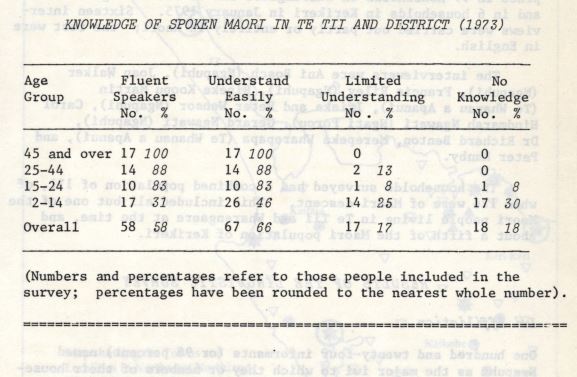-
Ngā Karere me Ngā Rauemi
News and Resources
Ngā Karere me Ngā Rauemi
News and Resources
-
Te Rangaihi Reo Māori
The Movement
Te Rangaihi Reo Māori
The Movement
-
Te Pae Kōrero
Our Community
Te Pae Kōrero
Our Community
-
Huihuinga
Events
Huihuinga
Events
-
Ngā Ara Ako
Learning Pathways
Ngā Ara Ako
Learning Pathways
-
SearchSearch
Search
Search

Although nearly a third of the school-age children spoke Maori well, people were concerned at the growing number of young people in ,the area who couldn't speak Maori at all. (This decline was worse in Kerikeri, but the people in Te Tii were also worried about it.) Much of the blame was placed upon the local playcentre, because, in its early stages, it had encouraged mothers to speak English rather than Maori to their children. Television was also blamed as having a bad effect on the Maori language in the homes of many. Because television, radios and newspapers were almost entirely in English, many Māori-speaking parents fought an uphill battle, as their children replied to them more and more in English. Several people felt strongly that the language was an important part of Maori culture, and said they would speak it 'to anyone who looked like a Maori'. Nine people told how they had been punished as children for speaking Maori at school.
Te Tai Tokerau | Northland | Far North | 1970-79 | 5% of Māori children can speak te reo. (1970-75) | Story is by tangata whenua
















Comments